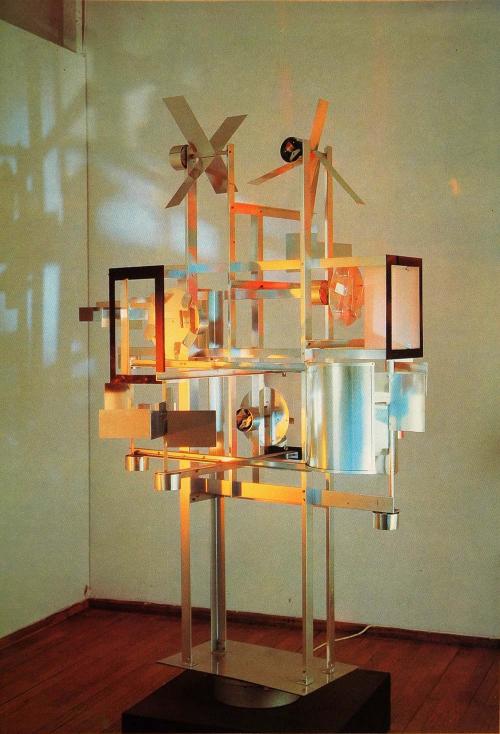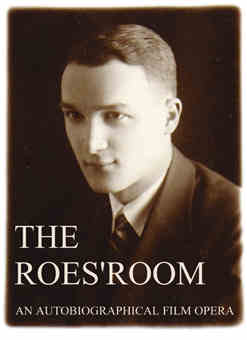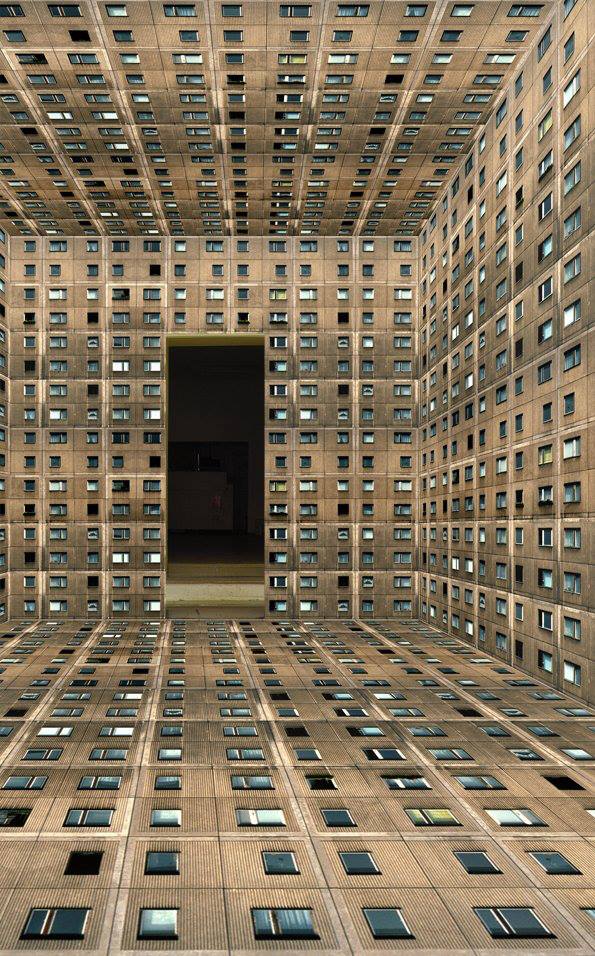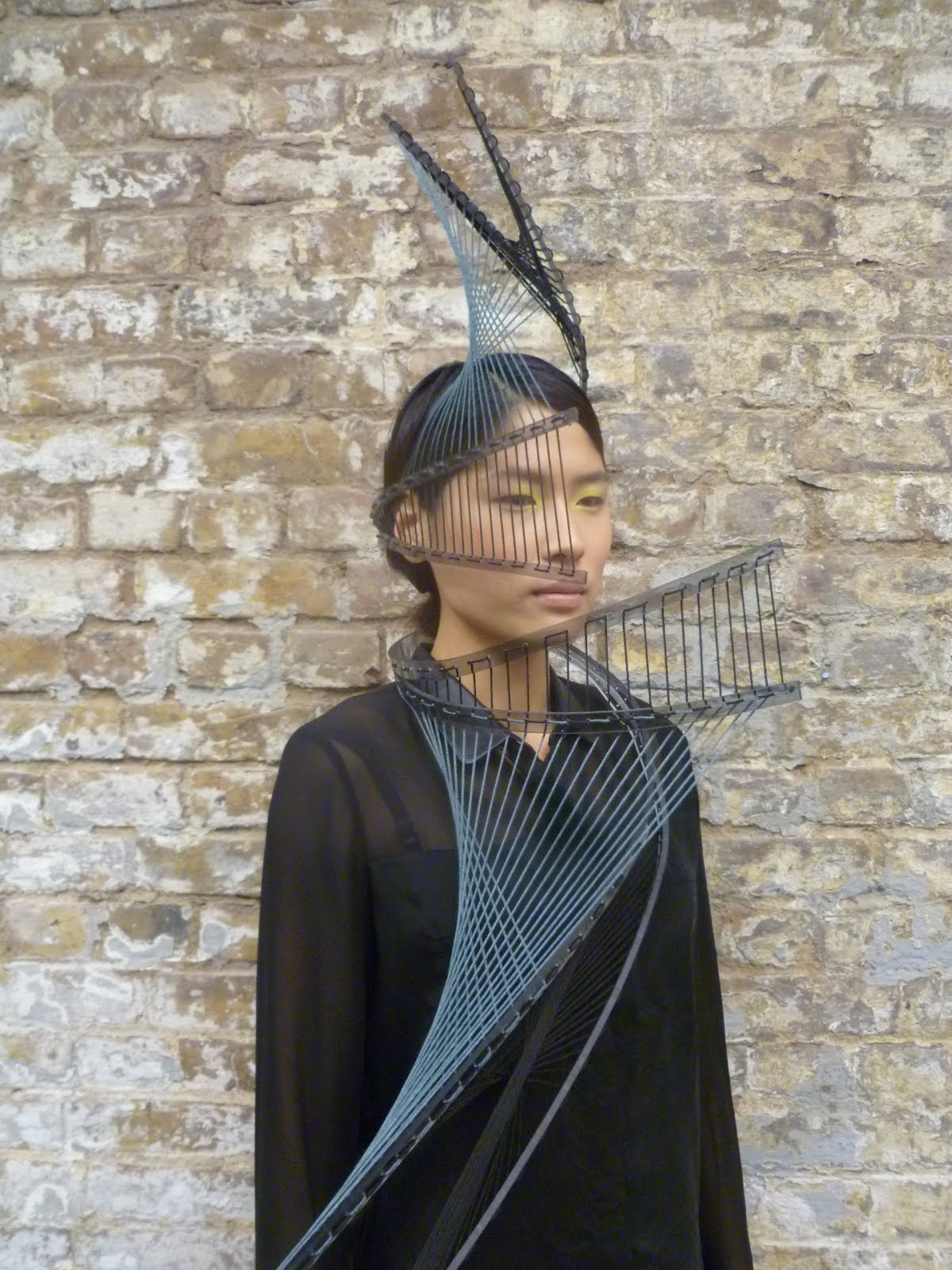



Ting-Tong Chang
Robinson
FILE FESTIVAL SAO PAULO 2016
The piece “Robinson” is part of Ting-Tong Chang’s new body of work investigating the history of automatons in Europe as a means of exploring utopian visions. The word “automaton” is often used to describe self-moving machines, especially those that have been made to resemble human or animal actions. From Jacques de Vaucanson’s Digesting Duck (1739) to Andreas Jakob Graf Dietrichstein’s Mechanical Theatre (1752), automatons have entertained kings and princesses, taught moral lesson to citizens and raised deep philosophical questions

TING-TONG CHANG
Robinson
FILE FESTIVAL
A obra “Robinson” faz parte do corpo de trabalho de Ting-Tong Chang que investiga a história dos autômatos na Europa como meio de explorar visões utópicas. A palavra “autômato” é freqüentemente usada para descrever máquinas que se movem sozinhas, especialmente aquelas que foram feitas para se assemelhar a ações humanas ou animais. Do Pato Digesting de Jacques de Vaucanson (1739) ao Teatro Mecânico de Andreas Jakob Graf Dietrichstein (1752), os autômatos divertiram reis e princesas, ensinaram lições morais aos cidadãos e levantaram questões filosóficas profundas.
.
“Robinson” is part of Ting-Tong Chang’s body of work investigating the history of automata in Europe as a means of exploring utopian visions. The word “automaton” is often used to describe machines that move by themselves, especially those that are made to resemble human or animal actions. From Jacques de Vaucanson’s Duck Digesting (1739) to Andreas Jakob Graf Dietrichstein’s Mechanical Theater (1752), automatons entertained kings and princesses, taught moral lessons to citizens, and raised deep philosophical questions.

NICOLAS SCHÖFFER
ニコラ·シェフェール
Chronos 5
In 1948 he created the concept of “space dynamism”. In his words, space dynamism is “the constructive and dynamic integration of space in plastic work.” Based on this idea, he will seek to create the total work of art, concretized in the cybernetic village, a city full of utopian spaces. His work combines cybernetic, kinetic art and interactive art, of which he is one of its first representatives, making the first works of art in real time or live in the history of art.

Cassie Mcquarter
Angelas Flood
Angela’s Flood (El diluvio de Angela), inspirado en el panel central de El Jardín de las Delicias, es un paraíso construido para personajes femeninos, un espacio alegre que cuestiona los reiterados comportamientos violentos y sexistas a menudo asociados al mundo de los videojuegos. El título procede de la protagonista, Angela Belti, una musculosa luchadora de la serie Power Instinct (Atlus, para Arcade, 1993) cuya apariencia desafió el estereotipo de los videojuegos retro llenos de mujeres esbeltas y semi desnudas. Una variedad de sprites, entre ellos personajes marítimos, pequeños elfos e insectos, conviven en esta utopía elaborada en 2000 líneas de HTML.

Liam Young
Planet City
Planet City, by Los Angeles-based film director and architect Liam Young, explores the productive potential of extreme densification, where 10 billion people surrender the rest of the planet to a global wilderness. Although wildly provocative, Planet City eschews the techno-utopian fantasy of designing a new world order. This is not a neo-colonial masterplan to be imposed from a singular seat of power. It is a work of critical architecture – a speculative fiction grounded in statistical analysis, research and traditional knowledge.
It is a collaborative work of multiple voices and cultures supported by an international team of acclaimed environmental scientists, theorists and advisors. In Planet City we see that climate change is no longer a technological problem, but rather an ideological one, rooted in culture and politics.

Soft Bodies
Micro-Utopia
In response to London’s pressing housing crisis Micro-Utopia proposes a shared, immersive and interactive version of a home, where space is born from the finely-tuned sensorial interplay between the body and virtual/physical objects connected to the Internet of Things. A chair invites us to stay with it for a moment; we crawl through a demanding fireplace; our hands are washed in a bowl of digital liquid – the highly speculative model of domesticity explores the architectural implication of co-inhabiting a minimal physical infrastructure within infinitely bespoke virtual worlds. Drawing on radical art practice, interiors in historical painting and contemporary product design, Micro-Utopia is the dream of a house that is nothing, but the parameters of our perception are triggered through the metaphorical dimension of the objects we interact with on a daily basis.

Lech Majewski
The Roe’s Room
opera movie
In this “absolutely singular autobiographical film opera” (Time Out London), multi-talented composer, writer, director and artist Lech Majewski presents a stunning, intimate, and ultimately magical work of unbridled creativity. A ravishing ode to the imagination, THE ROE’S ROOM is a place where the energy of youth and the eternal power of the natural world triumph over the banalities and deprivations of the commonplace.Within their apartment, a father, mother and son bear the dulling yoke of an ordinary urban life. His mind and heart borne aloft by the cycle of the seasons and the images and music within him, the son transforms his cloistered existence into a richly poetic emotional utopia. As autumn arrives, cracking flakes of plaster become falling leaves. With spring, a cold hard floor comes alive with meadow grass and love beckons in the form of a beautiful young girl’s outstretched hand.

LAb[au]
What hath God wrought?
The title of the installation is a line from the Book of Numbers in early modern English. It was the first message transmitted by telegraph in 1844, the first communication technology on the basis of electricity and binary coding. The artwork is fed by the 100 most used words in Thomas More’s book ‘Utopia’, feeding the correspondence between a series of telegraphs. The telegraphs translate the words into sound and light. Written rolls of paper drift to the floor. Slowly but surely, mistakes slip into the closed system and the meaning of the words alters. The Morse orchestra deals with the rationalism of the Renaissance and its belief in progress and posits by contrast an aesthetic of a self-regulating system in which the fault rules and defect becomes beauty.

Pierre-Jean GILOUX
Metabolism _ Invisible Cities
Pierre-Jean Giloux’s first monograph, the publication extends the eponymous video tetralogy inspired by the Japanese utopian architectural movement: Metabolism (1960-70).
The films of the Invisible Cities cycle are portraits of Japanese cities, superimposing filmed and photographed images of everyday, social and urban reality, with virtual images.
The book explores the links in Pierre Jean Giloux’s work that connect four Japanese cities with a rich architectural past (Tokyo, Yokohama, Osaka, Kyoto). This jorney through Japan’s Megapolis traces the history of Japan and ends with the reconstruction of pavilions for the Osaka 70 Universal Exhibition and a virtual proposal for a smart city on the waters of Lake Biwa.
The metabolist utopia to which reference is constantly made in the work of Pierre Jean Giloux played a decisive role in the constitution of post-war Japanese cultural identity and had a notable influence on many contemporary architects.

LARS VON TRIER
لارس فون ترير
拉斯·冯·特里尔
라스 폰 트리에
לארס פון טרייר
ラース·フォン·トリアー
Ларс фон Триер
melancholia
Truth be told, the best thing about Melancholia is its title. In an era where pop therapy abounds, true melancholy and its affinity to beauty needs to be rehabilitated—and of course differentiated from the more banal categories of “mental illness” and “depression.” In a pivotal phase of German Romanticism exemplified by Novalis’ poetry, the quintessentially melancholy category of “longing” is linked with a quest for the “unattainable.” Yet there’s also a tangibly utopian element to Novalis’ melancholy, personified by his dictum, “All representation rests on making present that which is not present.” Or as Max Blechman puts it in his essay “The Revolutionary Dream of Early German Romanticism, the Romantics pantheistic faith points to how art and religion are fundamentally one and the same activity. For is not art the desire to see the real in the ideal, to enliven the ideal behind the real, to transform unconscious idealism into conscious idealism—and is this not done through faith in the ideal?”

frank verkade
Paradise
serpent mouthpiece
Paradise is the term used to describe a place or state of timeless harmony and beauty. Whether connected to religion or not, the term Paradise echoes Utopian realms of humanity living at one with nature, sharing their tope with every exotic and fantastical creature imaginable.

AES+F
Inverso Mundus
The title of the work, Inverso – both an Italian “reverse, the opposite” and the Old Italian “poetry,” and Mundus – the Latin “world,” hints at a reinterpretation of reality, a poetic vision. In our interpretation, the absurdist scenes from the medieval carnival appear as episodes of contemporary life in a multichannel video installation. Characters act out scenes of absurd social utopias and exchange masks, morphing from beggars to rich men, from policemen to thieves. Metrosexual street-cleaners are showering the city with refuse. Female inquisitors torture men on IKEA-style structures. Children and seniors are fighting in a kickboxing match. Inverso Mundus is a world where chimeras are pets and the Apocalypse is entertainment.

victoria manganiello
computer 1.0
C O M P U T E R 1.0 seeks to function as a historical lens that shows how our relationship to computing technology has always been fraught with juxtaposed promises of utopian and dystonia futures, while the reality consistently finds itself somewhere in between.
This installation reminds it’s onlookers that society has been grappling with a digital existentialism and the question of ‘are we better off?’ since the birth of programming itself. In this way, C O M P U T E R 1 . 0 is the physical display of the eternally uncertain potential of technology.

REBECCA HORN
ريبيكا هورن
רבקה הורן
レベッカ·ホルン
레베카 호른
РЕБЕККА ХОРН
Spirits
Rebecca Horn é uma artista alemã, e um dos nomes consagrados da arte contemporânea. Conhecida por utilizar materiais diversos como penas, chifres, espelhos, etc, ela consegue unir em suas criações contundência e sutileza, realismo e certa magia surrealista, utopia e erotismo, política e lirismo, o alargamento e diminuição da escala.

Matt Mullican
Untitled
“This work arose from Mullican’s preoccupation with urban space and the creation of virtual cities and worlds. Mullican works with the symbols and old concepts that were used in the explanation of the world. The five parts of this work resemble archive boxes or type cases, which address the reduced character of virtual models. The containers could, however, also make us think of industrial complexes. They point to the loss of old concepts of the world and build on the creation of utopian ideals that remain valid for all time.” Teresa Lošonc

ANNETT ZINSMEISTER
Annett Zinsmeister is a german artist based in Berlin. She received her diploma at UDK – University of Arts and Design in Berlin[…] Her work has been shown in international exhibitions and museums, it is part of public and private collections and published in numerous publications. In her work she focuses on the intersection of art and architecture. She creates large-scale installations, conceptual and built spaces, photography, drawings, films and collages dealing with space. Recurring fundamentals in her oeuvre are the analysis, use and creation of modular principles, multiples, structures, patterns; and themes referring to the search for identity and utopian ideas, social interaction, communication, and the transformation of urban space.

Vittorio Giorgini
Walking Tall
Walking Tall was a skyscraper designed for New York in 1982-1983. The building, which was intended to rise to a height of more than 250 meters, employs asymmetric tetrahedral elements and is structurally reminiscent of utopian blueprints of the Soviet constructivist architectures of the 1920′s. Giorgini kept long-lasting friendships with the artists Jean Arp and Roberto Matta. The former artist may have left his biomorphic influences on Giorgini’s early topological architectures, while the latter artist’s dynamic three-dimension ‘inscape’ spaces may well be connected to Giorgini’s later angular works.

Catherine Chun Hua Dong
red baby
Red Baby consists of 30 staged photographs depicting a family of mixed race parents and a child. I painted my body red, wearing a diaper and fake mouthpiece, and I lived with strangers hired from Craigslist for eight hours in a red room, as their child. They were asked to feed me, play with me, pamper and take care of me. In this work, the “red baby” is a symbol for contemporary China, caught between east and west. The baby, symbolic of both communist and capitalist influences, is also a future model for social transformation, imagining a new utopia.

Adam Cvijanovic
Drawing inspiration from Renaissance fresco painting, Adam Cvijanovic’s ‘portable murals’ depict contemporary landscapes with a sense of celestial awe. Spanning 75 feet, Cvijanovic’s Love Poem captures the dreamy and disquieting essence of suburban Americana as a rapturous science fiction tableau. Envisioning sun-bleached L.A. ten minutes after the end of gravity, Cvijanovic’s utopia ascends in a whirlwind of consumerist ecstasy. Emulating movie backdrops as well as the acclivous perspective of cathedral dome tromp l’oiels, Love Poem… combines the sublime horror of disaster films with a majestic religiosity, as bungalows, Broncos, and palm trees are destroyed in the exaltation of their own perfectness. Painted entirely by the artist without assistants, on a plastic used by Fed Ex, Cvijavovic’s work reconstitutes the intimacy of timeless artistry with a modern day immediacy.

Tobias Putrih
Re-projection: Hoosac
Influenced by the utopian projects — and notable failures — of innovative artists and designers such as Buckminster Fuller, Frederick Kiesler, and Charles Eames, Tobias Putrih likens his works to experiments, or design prototypes. His use of cheap materials, including egg crates, cardboard, and plywood signify both a sense of potential and impending collapse. Many of the artist’s works reference the architecture and spectacle of the cinema: a space suspended between fantasy and reality, image and environment. With Re-projection: Hoosac Putrih distills the cinema to its most basic element: fishing line stretched across the gallery mimics the conical trajectory of a beam of light. A spotlight hits the strands of monofilament which in turn become a screen, reflecting an image in illuminated dots. Inspired by the Hoosac Tunnel just east of North Adams — a storied, engineering marvel that draws ghost-hunters to the area — Putrih’s tunnel is, likewise, both real and a representation, an optical trick that invites both wonder and investigation.


HAUS-RUCKER-CO
하우스-루커-코
是由豪斯拉克科
“Climate Capsules: Means of Surviving Disaster”
In view of the advancing climate change, the exhibition “Climate Capsules: Means of Surviving Disaster” at the Museum für Kunst und Gewerbe Hamburg poses the question: “How do we want to live in the future?” and draws attention to the socio-political consequences of coexistence under new climatic conditions. In view of the fact that the politicians are hesitant to enforce strict measures for climate protection and the citizens very sluggish about changing their habits, the change appears inevitable. The world community is accordingly confronted with the challenge of investigating various possible means of adapting to the climate change. This exhibition is the first to bring together historical and current climate-related models, concepts, strategies, experiments and utopias from the areas of design, art, architecture and urban development – pursuing not the aim of stopping the climate change, but envisioning means of surviving after disaster has struck. More than twenty-five mobile, temporary and urban capsules intended to make human life possible independently of the surrounding climatic conditions will be on view – from floating cities and body capsules to concepts for fertilizing sea water or injecting the stratosphere with sulphur. A symposium, film programme, readings, performances and workshops will revolve around the interplay between design processes and political factors such as migration, border politics and resource conflicts, and investigate the consequences for social and cultural partitioning and exclusion.



KRIS KUKSI
Imminent Utopia

ANDREI MOLODKIN
АНДРЕЯ МОЛОДКИНА
Democracy
Democracy, is a mirror reflecting the commodification of the democratic ideal. Empire at War, Molodkin’s portrait of an evangelistic George W. Bush, embodies the danger of theocracy – patriotism, nationalism, and religion are used to justify the most horrifying war crimes. Like a prismatic chessboard, Molodkin’s artworks articulate the contradictions between utopian ideals and reality.